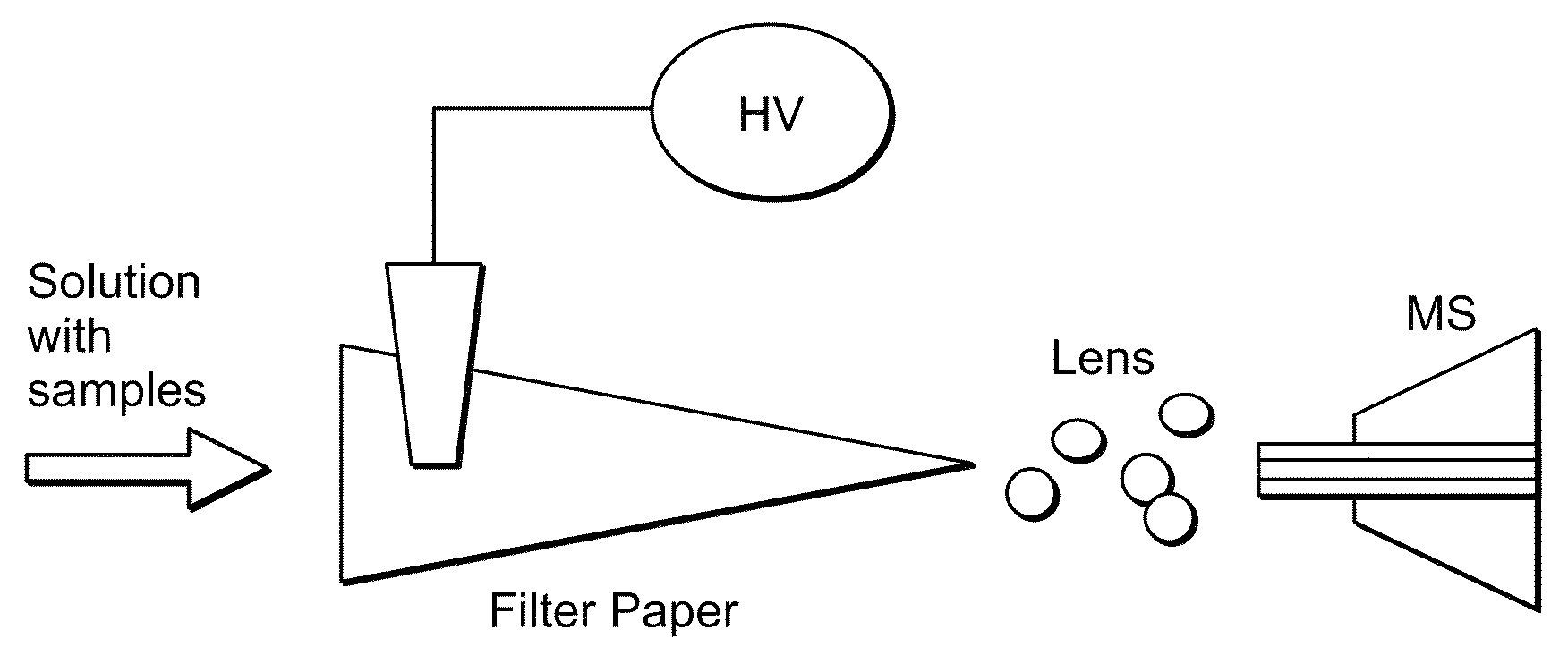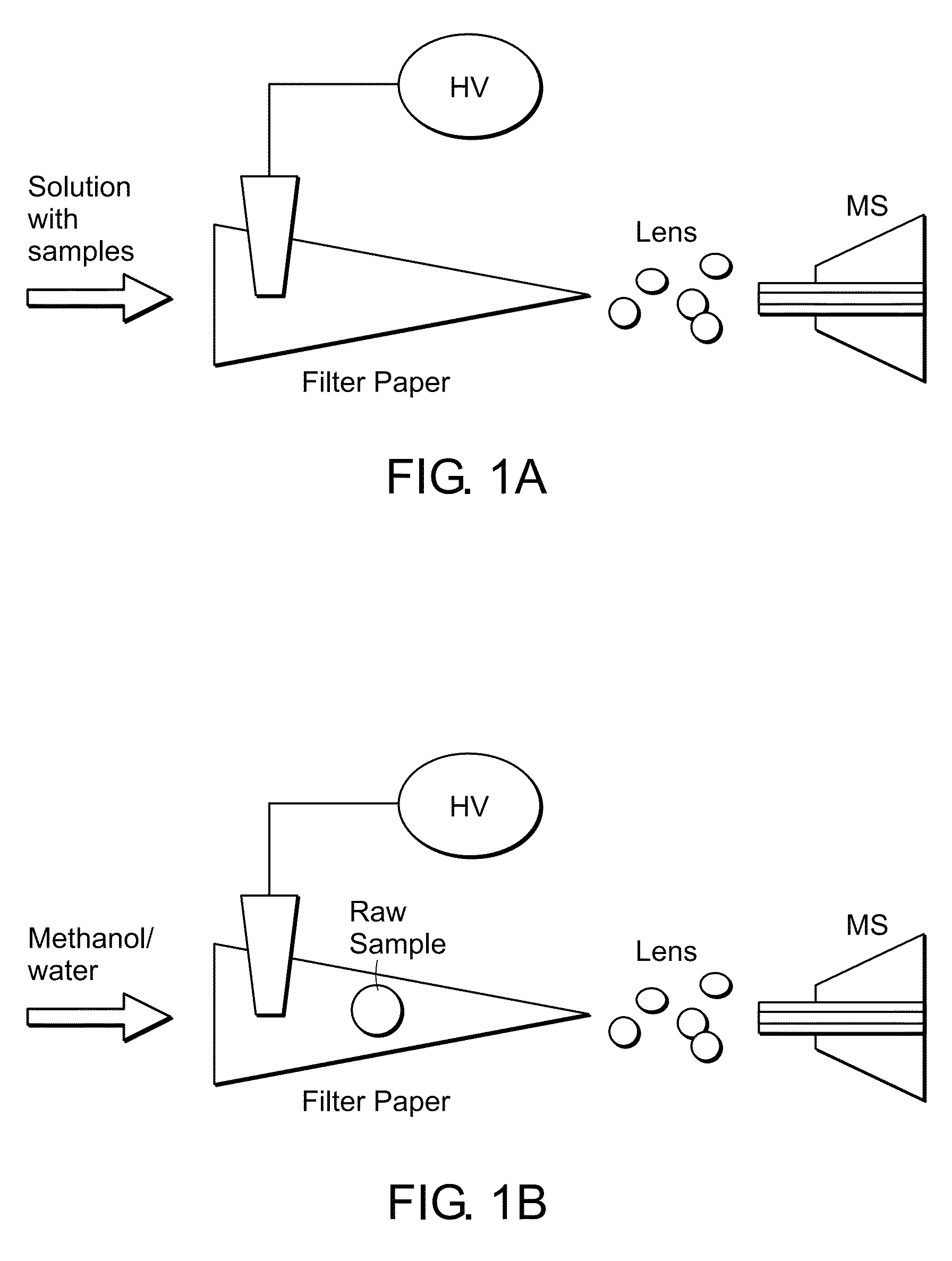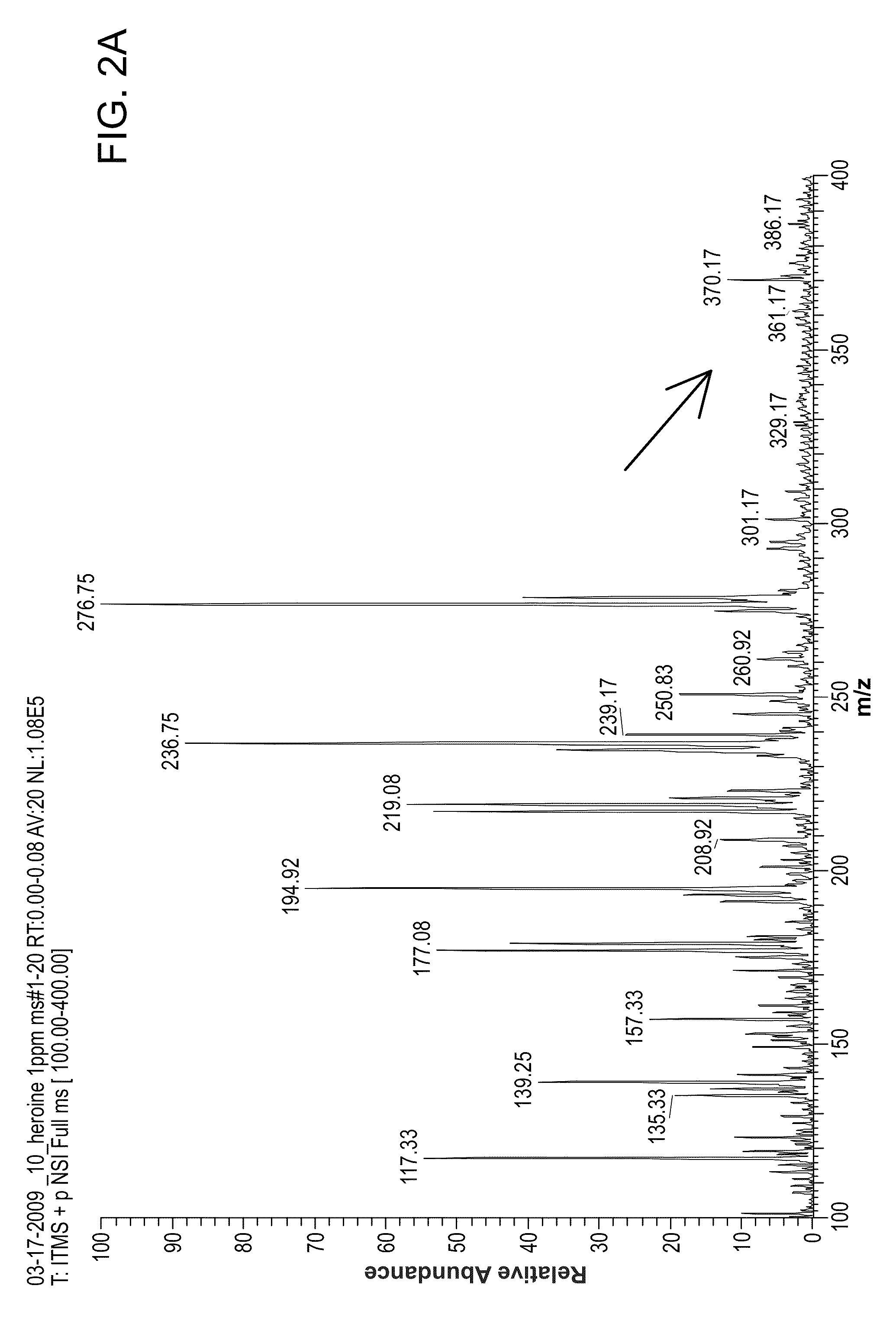Ion generation using wetted porous material
a porous material and ion generation technology, applied in the field of mass spectrometry analysis systems and methods of samples, can solve the problems of complex protocols, time-consuming, expensive, and reagents used during the purification process can interfere with subsequent analysis of a target analyte in the purified sample, and achieve the effect of reducing the salt and matrix
- Summary
- Abstract
- Description
- Claims
- Application Information
AI Technical Summary
Benefits of technology
Problems solved by technology
Method used
Image
Examples
example 1
Construction of an MS Probe
[0081]Filter paper was cut into triangular pieces with dimensions of 10 mm long and 5 mm wide and used as a sprayer (FIG. 1). A copper clip was attached to the paper, and the paper was oriented to face an inlet of a mass spectrometer (FIG. 1). The copper clip was mounted on a 3D moving stage to accurately adjust its position. A high voltage was applied to the copper clip and controlled by a mass spectrometer to generate analyte ions for mass detection.
[0082]Samples were directly applied to the paper surface that served as a sample purification and pre-concentration device. Filter paper allowed liquid samples to move through the hydrophilic network driven by capillary action and electric effects and to transport them to the tip of the paper. Separation could take place during this transport process. Sample solution was sprayed from the tip and resulted in ionization and MS detection when a high voltage (˜4.5 kV) was applied to the paper surface.
[0083]All ex...
example 2
Spray Generation
[0084]Spray was produced by applying a high potential on the wetted paper triangle. One paper triangle was placed in front of the inlet of LTQ with its sharp tip facing to the inlet, separated by 3 mm or more. Typically, 10 uL sample solution was applied to wet the paper triangle. The solution can wet or saturate the paper or form a thin layer of liquid film on the surface of ther paper. A high potential (3-5 kV) was applied between the paper triangle and mass inlet to generate an electric field, which induced a charge accumulation on the liquid at the tip of paper triangle. The increasing coulombic force breaks the liquid to form charged droplets and then the solvent evaporated during the flight of droplets from the paper tip to the mass analyzer. Paper spray required no sheath gas, heating or any other assistance to remove the solvent.
[0085]When liquid accumulated on the paper triangle, a Taylor cone was observed at the tip when examined with a microscope. The drop...
example 3
Probe Considerations
[0086]Probe Materials
[0087]A number of porous materials were tested to generate charged droplets for mass spectrometry. The materials were shaped into triangles having sharp tips and sample solution was then applied to the constructed probes. Data herein show that any hydrophilic and porous substrate could be used successfully, including cotton swab, textile, plant tissues as well as different papers. The porous network or microchannels of these materials offered enough space to hold liquid and the hydrophilic environment made it possible for liquid transport by capillary action. Hydrophobic and porous substrates could also be used successfully with properly selected hydrophobic solvents.
[0088]For further investigation, six kinds of commercialized papers were selected and qualitatively tested to evaluate their capabilities in analyte detection. Filter papers and chromatography paper were made from cellulose, while glass microfiber filter paper was made from glass...
PUM
 Login to View More
Login to View More Abstract
Description
Claims
Application Information
 Login to View More
Login to View More - R&D
- Intellectual Property
- Life Sciences
- Materials
- Tech Scout
- Unparalleled Data Quality
- Higher Quality Content
- 60% Fewer Hallucinations
Browse by: Latest US Patents, China's latest patents, Technical Efficacy Thesaurus, Application Domain, Technology Topic, Popular Technical Reports.
© 2025 PatSnap. All rights reserved.Legal|Privacy policy|Modern Slavery Act Transparency Statement|Sitemap|About US| Contact US: help@patsnap.com



